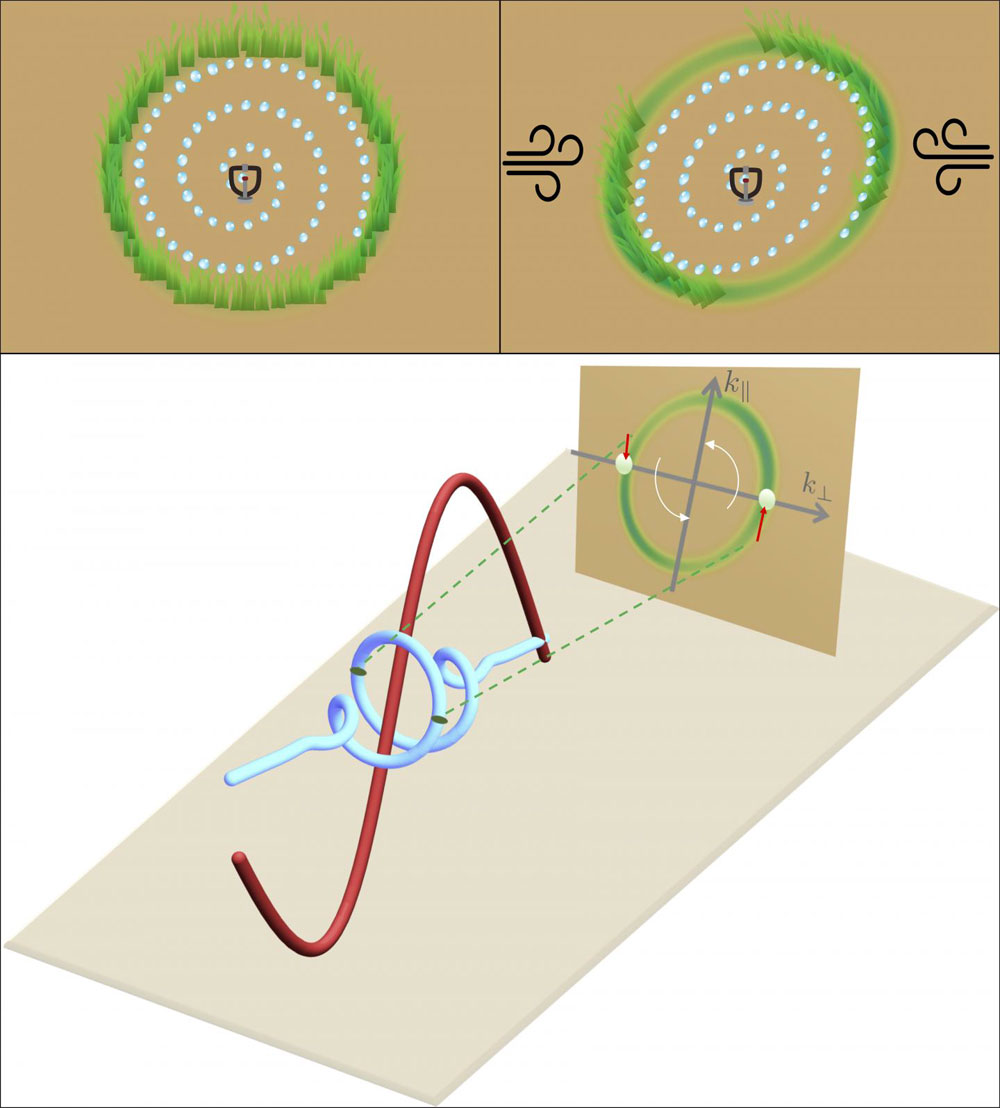Researchers have characterized the exact polarization state of light on the attosecond timescale. This discovery could facilitate the use of short, rotating pulses of light to learn more about the inner structure of materials.
Extremely short pulses of polarized light waves are excellent for studying many different types of materials. Existing methods for producing such pulses do not always produce the desired properties. The processes that take place inside matter are extremely short-lived, and the light pulses used to study them need to be similarly short — in the range of around 100 as. In this timespan, a light wave can undergo only a few rotations, which may not be enough to provide useful information about the material.

Researchers used this analogy to explain the physics of their discovery: Left alone, a circular sprinkler distributes water evenly, and grass grows in a circular pattern regardless of whether the sprinkler rotates clockwise, counterclockwise or randomly (top left). If wind blows, the grass is watered unevenly and its growth is uneven (top right). If the wind blows in a regular pattern, changing its strength with clockwork precision, the asymmetry in the grass growth allows us to reconstruct the properties of the sprinkler, distinguishing the precision-made, regularly rotating sprinkler from a randomly oscillating version. In our microworld setup (bottom), the sprinkler is the short pulse (in blue), lasting only about 10 to 16 s, with its electric field rotating even faster in an unknown pattern. The wind is a linearly polarized and precisely controlled IR laser field (in red). The grass is the measured photoelectron angular distribution (in green). The asymmetry in the latter allows us to reconstruct, for the first time, the polarization properties of the ultrashort pulse that lasts about 10 to 16 s. Courtesy of Felipe Morales and Álvaro Jiménez-Galán.
Researchers from the Max Born Institute for Nonlinear Optics and Short Pulse Spectroscopy (MBI) have developed a new method for precisely characterizing such light pulses. An extremely short, high-energy and circularly polarized light pulse is fired at an atom or a solid body. Upon being absorbed, the light pulse knocks an electron out of the body. This electron, which now carries information about the light wave, can reveal clues as to the properties of the sample being examined. Because the light pulses are circularly polarized, the ejected electrons also fly off with a rotating motion.
Researcher Misha Ivanov compared the electrons being ejected with the mechanics of a one-armed lawn sprinkler. If the sprinkler is allowed to run for a while, it will wet the grass in a full circle, whether it rotates consistently in one direction or changes the direction of its rotation. Thus, it is not possible to determine the direction in which the sprinkler has been turning from observing how the grass has been watered.
“But if a gusty wind comes along, then we can distinguish whether the sprinkler has been turning regularly or irregularly,” Ivanov said.
If the wind blows alternately from the left or right each time the arm of the sprinkler faces left or right, the patch of wet grass will not be circular, but elliptical in shape. A sprinkler rotating in an irregular pattern would create an ellipse on the grass stretched in the wind direction, while a regularly rotating sprinkler would display a tilted ellipse
In Ivanov’s experiment, an IR laser pulse serves as the “gust of wind.” The oscillations of the IR pulse are perfectly synchronized with the ultrashort pulses. The IR radiation accelerates the electron either to the left or right — just like the wind would blow water sprayed from the sprinkler.
“By measuring the electrons, we can then determine whether the light pulse possessed the desired consistent rotation or not,” said researcher Álvaro Jiménez-Galán. “Our method allows one to characterize the properties of the ultrashort light pulses with unprecedented precision.”
The more precisely these light pulses are characterized, the more details can be derived about the electron’s place of origin within a material.
This technique could impact the study of novel materials, including superconductors and topological materials that exhibit exotic behavior. Such materials could be used to build quantum computers or to allow superfast, energy-efficient processors and memory chips to be built into normal computers and smartphones.
The technique still only exists in theory, but researchers believe it will be ready to implement in the near future.
“Our requirements are fully within the latest state of the art, so there is nothing to preclude this from being realized soon,” Ivanov said.
The research was published in Nature Communications (doi:10.1038/s41467-018-03167-2).